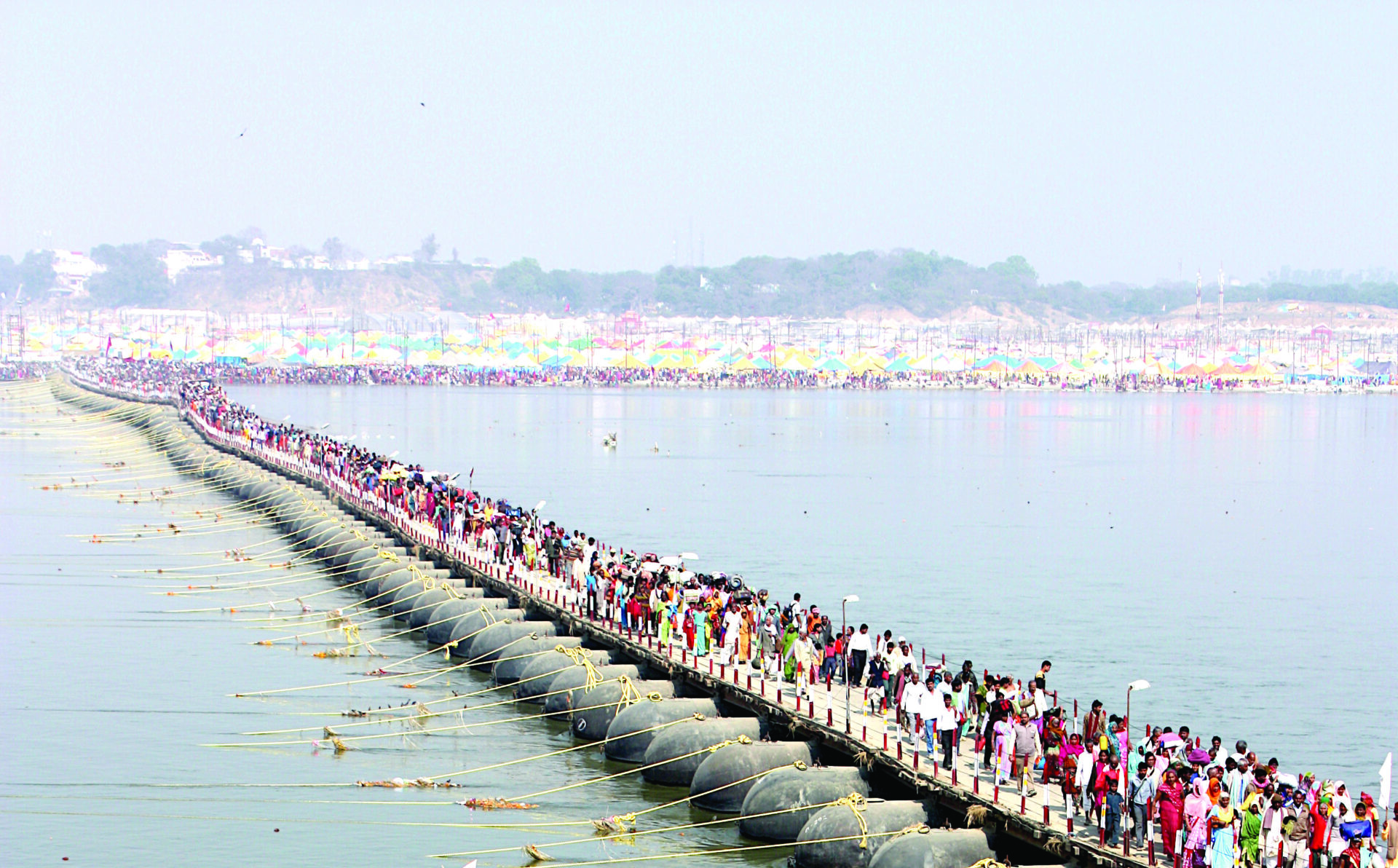The gathering of millions of devotees from diverse backgrounds at the Kumbh Mela symbolizes the unity of humanity.
In 1977, I had a chance to participate in the Maha Kumbh Mela in what was then known as Allahabad—now Prayagraj. I had been invited to accompany the then head of the Brahma Kumaris, Dadi Prakashmani, for the inauguration of a spiritual exhibition on a plot of land about 30 by 50 metres on the dry and sandy riverbank at the confluence of the Yamuna and Ganga rivers.
The front part of that plot of land was dedicated to a small auditorium plus the exhibits. The back part was for cooking and accommodation for some. I slept on the sand in this part during the five days that I was there.
As a young Australian, it was an incredible adventure for me. I had never been in such a colossal gathering of millions—not just a spectacle, but a profound spiritual odyssey. Apparently, the Kumbh Mela is so big that it can be seen from space. It was such a display of vibrant colours, competing loudspeakers, and amazing pageantry.
We had invited one of the four cardinal Shankaracharyas for the inauguration of our exhibition. He arrived with many followers, borne on a very elaborate palanquin. He was part of the panel of four speakers, of which I was one. Out of respect for this noble figure, he was invited to sit on a raised platform, at a higher level than the other three speakers.
Unfortunately, two days before we arrived, the entrance gate to our exhibition had been set on fire by unknown persons. Even though our people had spent at least a week preparing the first version, they had worked day and night to produce a second and even more beautiful gateway. This was the first thing that struck me—how much tireless dedication can achieve. The ideals embodied in “seva”, work dedicated selflessly to God, are not common in westerners.
As I wandered around, visiting the different exhibits and spiritual groups who had also pitched their sites on the land allocated for the festival, I saw similar “bhavana” (devotional feelings) in many. There were the Nagas wandering around, naked sadhus covered only in ash. There was the agglomeration of people at the special places for bathing in the river. People happily immersed themselves in the water, even though the temperature was around 5 degrees Celsius. There were many gurus and their followers. I saw one tent with a huge queue of pilgrims waiting to get in, where a bearded person with an incredible aura was greeting each of them, by touching the middle of their forehead with a peacock feather.
It was only afterwards that I reflected on the significance of this, the biggest of human festivals.
It is certainly a testament to the enduring power of faith and the unwavering pursuit of spiritual liberation that we see in many spiritual traditions. Its roots lie deep in Hindu mythology. Legend has it that the gods and demons fought a fierce battle for the nectar of immortality, the “amrit”. During this cosmic struggle, a few drops of the “amrit” fell to Earth at four specific locations—Prayagraj, the confluence of the Ganga, Yamuna, and the subtle Saraswati river; Haridwar (on the Ganga river); Nashik (on the Godavari river), and Ujjain (on the Shipra river).
The Brahma Kumaris view the Kumbh Mela as a significant event rich in spiritual symbolism: It is primarily seen as a time for spiritual cleansing. The act of bathing in the sacred rivers is symbolic of washing away sins and impurities, allowing individuals to renew their spiritual selves. The Purifier is God, not the water of the river.
The gathering of millions of devotees from diverse backgrounds at the Kumbh Mela symbolizes the unity of humanity. There is the importance of collective consciousness and the interconnectedness of all souls. The term “Kumbh” translates to “urn,” and it is often associated with the pot of nectar (“amrit”) that emerged during the churning of the ocean in Hindu mythology as mentioned above. This symbolizes the quest for spiritual knowledge and the attainment of immortality through divine wisdom.
The cyclical nature of the Maha Kumbh Mela, occurring every 12 years, reflects the spiritual concept of time in Hindu philosophy. It symbolizes the eternal cycles of creation, preservation, and dissolution, encouraging participants to reflect on their own life cycles. The event is seen as an opportunity to connect with the Divine. The Brahma Kumaris encourage meditation and introspection during the Kumbh Mela, allowing individuals to deepen their relationship with God and experience spiritual insights.
In essence, the Kumbh Mela is a profound spiritual gathering that embodies themes of purification, unity, and divine connection, serving as a reminder of the importance of spiritual growth and community in the journey of life.
Ken O’Donnell is an author and the director

